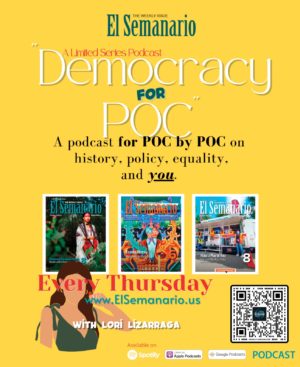The much-anticipated Borderlands of Southern Colorado exhibit recently opened at El Pueblo History Museum in Southern Colorado, expanding the knowledge and definition of “borderlands” – historical, political, cultural, sociological, environmental and theoretical – and honoring the many cultures that make up Colorado’s identity and that influence U.S. history.
“The Borderlands history is very important to individuals, families and communities of southern Colorado.”
Dawn DiPrince, Director, El Pueblo History Museum
The exhibit includes a once-in-a-lifetime opportunity to see the original Treaty of Guadalupe-Hidalgo, the historic document that ended the Mexican-American War, now on loan from the National Archives Museum in Washington, D.C., through July 4. This will be the first time the Treaty of Guadalupe-Hidalgo has ever been on exhibit in Colorado.

“The Treaty of Guadalupe-Hidalgo is a milestone in American history that ended a war and reshaped our country,” said Archivist of the United States, David S. Ferriero. “We are honored to share this peace treaty with the El Pueblo History Museum, built on the site of the 1842 trading post on this historic international border.”

The 1848 treaty transferred all or parts of Texas, New México, Arizona, California, Utah, Nevada, Wyoming and Colorado, from México to the United States – more than 525,000 square miles of territory. While the treaty moved the political border between the United States and México from the Arkansas River to the Rio Grande, it did not alter the linguistic, ethnic, and geological borders that were already taking shape. In shifting this border, the treaty impacted the lives of families who still  consider southern Colorado home.
consider southern Colorado home.
“The Treaty of Guadalupe-Hidalgo significantly redefined the geographic and cultural borders of what we know today as Colorado,” said Governor John Hickenlooper. “This exhibit highlights an important part of our state’s history that is unknown to many, and honors the ancestral families who made Colorado what it is today.”
The permanent, bilingual exhibit focuses on southern Colorado’s geo-political border history, as well as the region’s historic and ongoing borders of cultures, ethnicities, landscapes, industries, religions and identities. Visitors experience an interactive map that showcases shifting zones of control; the original Colorado Constitution printed in Spanish and German; adobe-building station; ancestor map, where visitors can connect their roots to Pueblo; beet-topping tool from the Bracero Program; and a 1940s interactive kitchen that showcases ethnic food traditions, including the Pueblo Chile.
“Most people are not familiar with this aspect of Colorado’s identity,” said El Pueblo History Museum Director Dawn DiPrince. “The Borderlands history is very important to individuals, families and communities of southern Colorado, and we are proud to collaborate and share this history with a broader audience to expand the way Coloradans understand the history of our state.”

Also, on display at El Pueblo History Museum is the Children of Ludlow, an award-winning exhibit that examines the Colorado Coalfield Strike and Ludlow Massacre through the eyes of the more than 9,000 children who endured the strike. The exhibit was originally part of the statewide Ludlow Centennial Commemoration.
The Museum showcases the Pueblo’s history and the region’s many cultural and ethnic groups. The property includes a re-created 1840s adobe trading post and plaza, and the archeological excavation site of the original 1842 El Pueblo trading post.

El Pueblo History Museum is located at 301 North Union, Pueblo, CO, 81003. The Museum is open each day, 10am-4pm (open Sundays through Labor Day). Admission for members is free, $5/adults, $4 for seniors (65+), military and students with ID, and children (ages 6-10); and free for children under age 6.
For more information: 719-583-0453 or visit
historycolorado.org/venue/el-pueblo-history-museum.
- Let’s Get Child Labor Off Our Dinner Plates - June 30, 2025
- NM’s Outsized Reliance on Medicaid Has Advocates Prepping for Worst-Case - May 29, 2025
- Sore like it Hot - May 15, 2025






